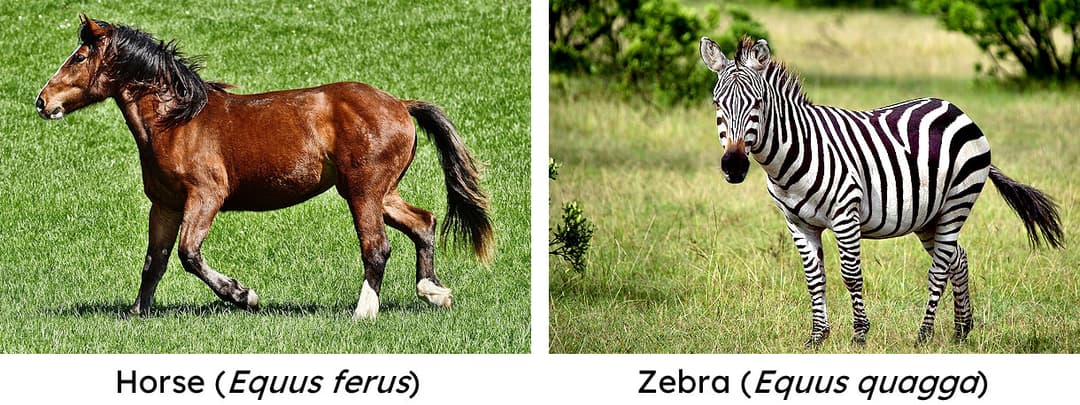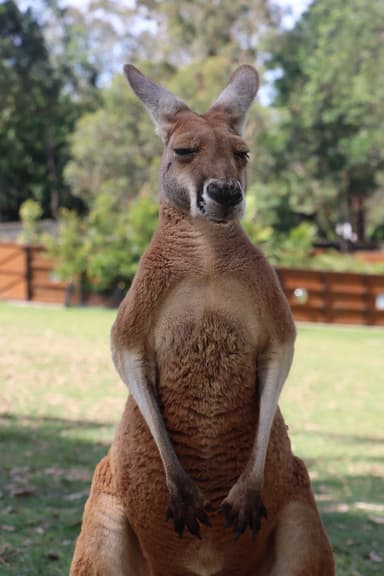Myths about teaching can hold you back
- Year 8
Classification and species
I can explain how organisms are classified into groups, and what a species is.
- Year 8
Classification and species
I can explain how organisms are classified into groups, and what a species is.
These resources will be removed by end of Summer Term 2025.
Switch to our new teaching resources now - designed by teachers and leading subject experts, and tested in classrooms.
These resources were created for remote use during the pandemic and are not designed for classroom teaching.
Lesson details
Key learning points
- Similarities and differences in the features of organisms are used to classify them into groups within larger groups.
- Scientists classify every organism into groups from kingdom down to species.
- In larger groups such as kingdoms, there are more organisms with fewer similarities in their features.
- A species is a group of individuals with similar features and genes that can reproduce to make fertile offspring.
- Scientists give each species a binomial name to identify the genus and species.
Keywords
Classification - The process of sorting things into groups.
Kingdom - A very large group of organisms with only a few features in common, such as all animals or all plants.
Genus - A small group of several species.
Species - A group of very similar organisms that can reproduce with each other to produce fertile offspring.
Common misconception
Grouping organisms based on similarities in their names (e.g. fish and jellyfish) or habitat.
The lesson makes clear that scientists classify organisms into groups using similarities and differences in their features (e.g. backbone).
To help you plan your year 8 science lesson on: Classification and species, download all teaching resources for free and adapt to suit your pupils' needs...
To help you plan your year 8 science lesson on: Classification and species, download all teaching resources for free and adapt to suit your pupils' needs.
The starter quiz will activate and check your pupils' prior knowledge, with versions available both with and without answers in PDF format.
We use learning cycles to break down learning into key concepts or ideas linked to the learning outcome. Each learning cycle features explanations with checks for understanding and practice tasks with feedback. All of this is found in our slide decks, ready for you to download and edit. The practice tasks are also available as printable worksheets and some lessons have additional materials with extra material you might need for teaching the lesson.
The assessment exit quiz will test your pupils' understanding of the key learning points.
Our video is a tool for planning, showing how other teachers might teach the lesson, offering helpful tips, modelled explanations and inspiration for your own delivery in the classroom. Plus, you can set it as homework or revision for pupils and keep their learning on track by sharing an online pupil version of this lesson.
Explore more key stage 3 science lessons from the Species and classification (differences between species) unit, dive into the full secondary science curriculum, or learn more about lesson planning.

Equipment
Licence
Prior knowledge starter quiz
6 Questions
Q1.Which of the following organisms are animals?
Q2.An invertebrate animal is one that does not have a ...
Q3.Match the term to its description.
An animal that eats another animal.
An animal which only eats plants.
An animal which eats animals and plants.
Q4.Starting with the largest, sort these groups into order of size.
Q5.Which of the following is not a group of vertebrate animals?
Q6.Match the group of vertebrate animals to the correct description.
A warm-blooded animal that gives birth to live young.
A cold-blooded animal that has moist skin and lays eggs.
A cold-blooded animal that lays eggs and has dry, scaly skin
A warm-blooded animal that lays eggs and has feathers.
A cold-blooded animal that uses gills to breathe.
Assessment exit quiz
6 Questions
Q1.Which of these is a behavioural difference between animals?
Q2.Which of these correctly describes the difference between the horse (Equus ferus) and zebra (Equus quagga)?

Q3.Starting with the largest group, sort these levels of classification into descending order.
Q4.Which option shows the correct way to format a binomial name for a red kangaroo?

Q5.A is a group of individuals with similar features and genes that can reproduce to make fertile offspring.
Q6.Match the classification level with the name of the panda (Ailuropoda melanoleuca).
animal
vertebrate
carnivore
Ailuropoda
melanoleuca


